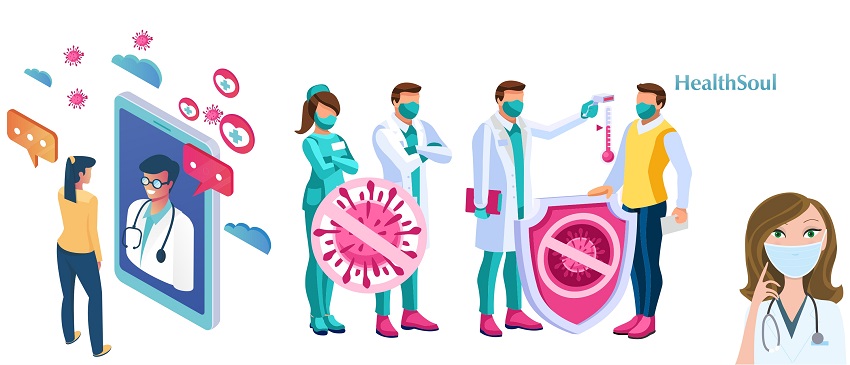How Medical Offices and Hospitals are Handling COVID-19 Testing

The coronavirus pandemic has taken the world by storm. Known to be easily transmittable, hundreds of thousands have contracted the virus and thousands have lost their lives due to complications. As the number of affected individuals is still unknown, medical offices and hospitals around the globe have been scrambling to implement safety procedures and methods to test and treat those in need.
Whether you’re someone who believes you’re showing signs of COVID-19 or you’re a medical professional wondering how to safeguard yourself, your staff, and your patients, here’s a look at the most popular precautions healthcare facilities are taking to test for the coronavirus:
Infographics, Articles, Videos, and Online Symptom Checkers
Education is the key to prevent the spread of the coronavirus which is why healthcare providers are utilizing digital platforms to educate the general public on the coronavirus symptoms. Some health experts are recording videos and interviews explaining in detail the various symptoms one might experience and instructions on what to do if you believe you’ve contracted the virus. Others have taken to their websites and social media platforms to add articles and online symptom checkers for patients to assess their own health status.
The objective here is to reduce the number of people coming into the doctor’s office or emergency room (that don’t need to be there) and prevent the spread. If patients have a clear understanding of the symptoms and can make an assessment at home, they can make a more informed decision about whether they need to seek medical assistance.
Telemedicine
Some medical professionals have created a safe avenue for patients to check in with their healthcare providers for assistance with coronavirus symptoms or other medical problems. Telemedicine is a process using digital platforms and communication software to provide medical advice or services to patients without an in-person visit. Patients can schedule an appointment and have a video chat with a doctor or nurse practitioner where they can describe their symptoms, receive a diagnosis, and even have prescriptions filled. This approach, again, keeps patients from unnecessarily crowding overpacked medical facilities.
Outdoor Screenings
To keep coronavirus patients separate from other patients receiving medical treatment, hospitals and medical offices have set up outdoor screening sites. They set up customized 10 X 10 canopies and tables with medical supplies required to test patients as they arrive. Trained medical staff will often take their temperatures and ask a series of questions to determine other symptoms. Patients who are believed to be infected with the virus are provided with masks and gloves and asked to wait in a designated area for further instruction and treatment. Such measures can help to protect medical staff and patients (not affected by the virus).
Separate Waiting Areas
As stated above, medical facilities are going to great lengths to separate coronavirus patients from other patients. This has caused many of them to create separate waiting areas to prevent the spread of the virus and keep everyone safe. These waiting areas are located several feet away from traditional waiting areas and are sectioned off with signage, and in some cases, plastic coverings for added protection.
Drive-Thru Testing
Medical facilities and other establishments are doing their part to slow the spread while testing coronavirus patients by setting up drive-thru testing stations. Depending on where your facility is located (government officials have different instructions by state) residents can either call into schedule an appointment or visit a publicized drive-thru testing station if they feel they have symptoms.
Patients pull up in their cars at the predetermined time and wait for a medical professional to check your symptoms and administer the swap test. The test is then secured and sent off to a laboratory for results. Patients who are experiencing severe symptoms are advised to visit a nearby doctor’s office or hospital while others are told to self-quarantine at home until they’ve received the results.
The coronavirus pandemic is scary, without a doubt. As the world leaders, scientists, and medical experts strive to get a hold of this outbreak, they are taking extreme precautions to continue to protect the livelihood of their staff and the communities they serve. Though a shortage of medical supplies, test kits, and staff present challenges, the above-mentioned methods have proven to be effective in slowing the spread and treating those who need it most.

